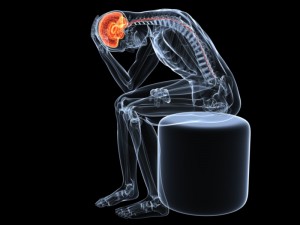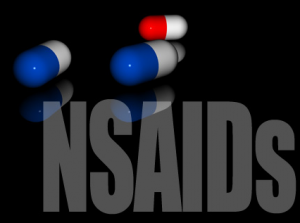There are many kinds of headaches, and these will vary in their intensity, location, and other characteristics. The brain lacks pain receptors and does not perceive pain: the pain from headaches is from the pain-sensitive structures of the head,  which include the skull, sinuses, muscles and other soft tissues.
which include the skull, sinuses, muscles and other soft tissues.
Primary headaches are headaches that have no directly attributable cause, and include migraines, tension, and cluster headaches. Secondary headaches have identifiable trigger events, such as from aneurysms, strokes, and trauma.
When headaches result from a work related injury or a car accident, it is best to seek treatment with an Arizona injury doctor such as at Arizona IMA. The injury doctor can help reduce both the frequency and severity of the headaches.
You should seek medical attention immediately if you observe any of the following danger signs:
- Sudden violent onset and intolerable pain (“worst headache ever”)
- Progressive headache worsening over 24 hours

- Visual symptoms such as blurring, doubling of vision, loss of vision
- Symptoms affecting only one side, such as weakness or numbness
- Confusion, memory loss
- Slurring of speech, weakness, loss of motor control or balance
- One-sided eye redness
Headaches are identified based on their presentation and clinical history. This should be done with a licensed physician. Sometimes, the physician may request additional examinations, such as CT or MRI scans.
 Cluster headaches are described as sudden and severe attacks of sharp, stabbing pain that can last 30 minutes to three hours. This is usually one sided, and is located near the eye or temple.
Cluster headaches are described as sudden and severe attacks of sharp, stabbing pain that can last 30 minutes to three hours. This is usually one sided, and is located near the eye or temple.
Cluster headaches may be accompanied by tearing, or rhinorrhea (runny nose). Cluster headaches can be managed acutely with oral pain medications. These are typically prescribed in a stepwise fashion, starting from non-steroidal anti-inflammatory drugs (NSAIDs) to opioid analgesics.
Therapies to provide prophylactic reduction in cluster headache attacks include verapamil, a calcium channel blocker, and methysergide, a derivative of ergot. Some studies have shown that anticonvulsants such as topiramate, and other drugs such as sumatriptan and indomethacin can be prescribed for the prevention of attacks, although these need more large scale studies for evaluation.
Patients with cluster headaches are also advised to avoid possible triggers and aggravators, such as smoking. Nicotine and alcohol, in particular, have been shown to be possible triggers of cluster headaches.
Tension headaches are typically of mild to moderate severity. They are described as a tightness or pressure across the head. In contrast to migraine, there are no other symptoms such as photophobia, nausea, or vomiting. Tension headaches typically last from 30 minutes to an hour.
Episodes of tension headaches have been noted to respond well to immediate therapy with analgesics such as aspirin, and NSAIDs such as ibuprofen and naproxen. Opioid analgesics can also be used for symptomatic relief. Tricyclic  antidepressants and benzodiazepines can be used in addition to analgesics for patients with chronic tension headache. Botulinum toxin has been shown to be of possible use for treatment, although further studies are still needed.
antidepressants and benzodiazepines can be used in addition to analgesics for patients with chronic tension headache. Botulinum toxin has been shown to be of possible use for treatment, although further studies are still needed.
Tension headaches have been shown to result from stressors. It is recommended that patients can lower the risk for attacks by ensuring health living, such as regular sleep, exercise, and proper diet. Life stressors from work and environment, or physical stressors such as fluctuating diets and weather can trigger tension headaches, and physicians typically advise their patients to avoid these.






Leave A Comment